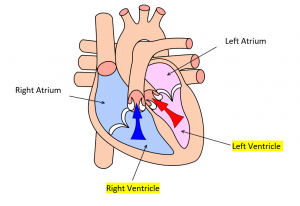Hi Team, the purpose of this assignment is to create three different definitions of a word for a non-technical audience. The presentation and style of written material is just as important as the content itself when explaining anything. The term chosen for this assignment must be relatively complex and be defined in a way that is appropriate for the audience.
Term: Systole
Situation/Context: A patient has been referred to a cardiologist by their family doctor due to a recent heart attack. The patient is a young business professional with no previous serious medical issues and little knowledge on bodily functions. The cardiologist wants to explain to the patient how exactly their heart attack happened. In order to explain this, the cardiologist first has to explain how the heart pumps blood via systole.
Parenthetical Definition: Systole (a rhythmic contraction of the heart) is what pumps blood to the body.
Sentence Definition: Systole refers to the rhythmic contractions of the ventricles which are two of the four heart chambers. The contractions of the right ventricle pump blood to the lungs for oxygenation while the contractions of the left ventricle supply blood to the entire body.
Expanded Definition
Etymology: The word systole is derived from the Greek word sustellein, which means “to contract.”
Comparison: When your blood pressure is taken you are given a systolic (top) and diastolic (bottom) number. The systolic number refers to the pressure exerted by the blood on the walls of the arteries during systole.
Visual:

Figure 1. A diagram of the heart showing the contracting ventricles during systole where the arrows indicate the direction of blood flow (Wikipedia)
Description of Parts and Operation:
There are a few key anatomical features relevant to systole.
1. The atria – the empty cavities that hold blood before it is pumped into the ventricles
2. The ventricles – the empty cavities that hold the blood before it is pumped into the body
3. The aortic and pulmonary valves – these separate the ventricles from the aorta and pulmonary trunk
4. The aorta and pulmonary trunk – These are the vessels through which the blood is pumped out of the ventricles
Putting these all together, blood arrives to the right and left atria via their respective arteries. Both atria contract and push their blood into their respective ventricles. After the atria have fully contracted, the ventricles then contract. This pushes the blood in the right ventricle through the pulmonary trunk (via the pulmonary valve) and to the lungs to become oxygenated. This blood will eventually return to the left atrium and begin the next cycle. In contrast the blood in the left ventricle goes through the aorta (via the aortic valve) and oxygenates the entire body through various vessels. This blood will also return to the heart but to the right atrium where it will continue the cycle.
Citations
File:Heart systole.png. (2018, August 11). Wikimedia Commons, the free media repository. Retrieved 22:31, June 12, 2020 from https://commons.wikimedia.org/w/index.php?title=File:Heart_systole.png&oldid=314427999.
Systole. (n.d.). Retrieved June 4, 2020, from https://www.etymonline.com/word/systole
Systole: Definition of Systole by Oxford Dictionary on Lexico.com also meaning of Systole. (n.d.). Retrieved June 4, 2020, from https://www.lexico.com/en/definition/systole
The Editors of Encyclopaedia Britannica. (2020, March 11). Systole. Retrieved June 5, 2020, from https://www.britannica.com/science/systole-heart-function
Leave a Reply